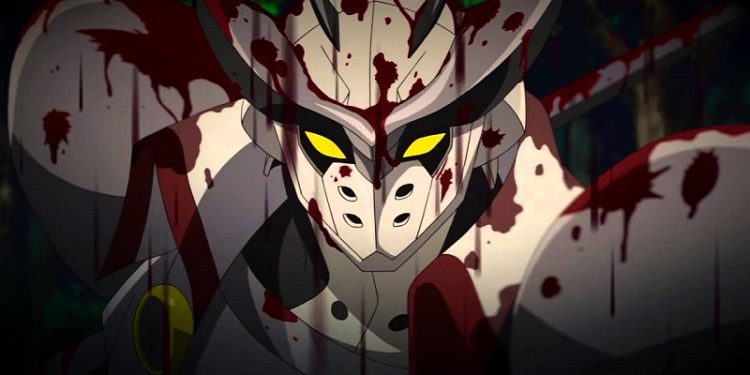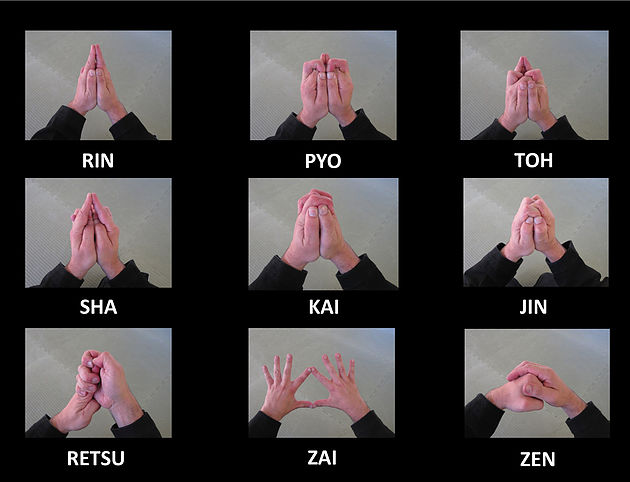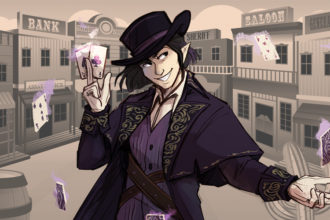Playing a Better Assassin

Assassins are typically viewed as these evil people who go around murdering others for hire, but this is far from what assassination needs to look like. There are a variety of motivations, quirks, methods of stealth and toolkit of the assassin, these intriguing and historical characters can be shown to be the true terrors that they are.
Before we begin, we need to define what an assassin is. To begin, we’re not talking about a specific class as might be in some RPG games, but the core concept of what an assassin is. The following is a good definition:
An Assassin is someone who kills a notable, famous, or important person, by a treacherous surprise especially for political or religious reasons, or someone who is paid to kill a particular person.
8 Unique motivations for assassination
Originally, the concept of assassination was a person who killed for religious reasons, something akin to the terrorists of today. As time went on, there came to be other reasons for assassination. Here’s a “quick and dirty” list of reasons to consider.
-
Revenge (d6)
- To kill someone who has killed one of their family, or loved ones in wartime
- To kill someone who has dishonored their family name with false accusations
- To kill someone who has stolen a priceless heirloom from their family or loved ones
- To kill a former friend who has betrayed them or their colleagues
- To kill someone who misused their identity
- Roll twice and combine
-
Protection (d6)
- To protect their loved ones from some sort of evil person/ organization
- To protect society from “trash” – those who would mar its perfection
- To rid society of the ‘unworthy’
- To prevent others from having to suffer their pain
- To protect the innocent
- To rescue a friend or colleague who is in enemy hands
-
Political/ military (d4)
- As a dog of the government, to do their bidding, taking out whoever they tell the assassin to kill
- To kill a someone who abuses military power to their advantage
- To rid the government of corruption
- To cause a civil war/ governmental instability to take advantage of
-
Power (coin toss)
- To prove they’re more powerful than the important person who’s being assassinated
- To prove they have the stealth to get away with the assassination without getting caught
-
Money/ debt
- To repay a debt
- To get wealthy enough to save someone (or an entire group of people) by collecting the money for the jobs.
- To stop being bothered by bill collectors
-
Hatred (d3)
- To be rid of their hated sibling/ parent
- To rid the world of an overbearing employer
- To rid the world of a hated rival
-
Miscellaneous (d4)
- To restore something to a previous state (for instance a druid trying to reclaim a land to become wilderness once again)
- To do what one must to achieve a desired result
- Simply doing what one is ordered
- To infiltrate an organization and replace one of its leadership
- As a byproduct of insanity
-
Accident
- By accident by killing someone important, and the person gets tricked, blackmailed, or forced into being an assassin for other targets.
- Found they were good at killing others stealthily and after having done it a few times for their own purposes, people seek out the assassin to kill targets for them.
D8 unique quirks
Assassins should not be viewed as something that is normal, so over time those who enter this lifestyle will develop quirks based on how they view what they are doing it.
- Assassin must use a specific weapon or a type of poison they are an expert in that they have dedicated to the cause. This may end up making the assassination attempt *less* likely.
- Assassin leaves a calling card to brag of his deed
- Assassin performs a ceremony before each kill to dedicate it to his cause
- Assassin wears a certain outfit to do his killing (though there may be another reason for this, see below.)
- Assassin has been under cover for such a long period of time and has had so many personalities, they are unsure as to who they truly are anymore.
- Assassin is willing to sacrifice anything in order to “make the kill” – including their own lives or the lives of their teammates.
- Assassin is always drunk/ high or engaged in other addictive behaviors (sex, gambling, etc.) when not on the job.
- Assassin pushes others away, never letting anyone get to know them, for fear they may have to assassinate them later.
The 5 S’s of Stealth
In order to not only assassinate a target, but to be able to get away with it, assassins must know how to move around stealthily.
Sight – do not be seen while performing the assassination. Take routes where you are unable to be seen, if possible. Typically, most people don’t look up more than 45 degrees. If you can get above that line of sight, can somehow cover yourself with something that matches the background if someone *does* happen to look up, you are essentially invisible.
Sound – as the assassin moves around he needs to be careful not to make noise. This explains the typical creeping that ninjas do.
Shape – camouflage breaks up the shape of the assassin, so they are not easily seen in natural environments. Furthermore, if having to do an operation at night, if possible, they’ll choose nights when the moon is not full and as they travel across the rooftops, they’ll keep a low profile as not to be seen.
Sign – if the assassin needs to take out a guard, they hide the body somewhere, instead of leaving the body out in the open for anyone to find.
Shine – assassins will typically cover the shine of hair, the forehead, the nose with something so their reflection doesn’t give away their presence.

9 Cuts Meditation
The toolkit of the assassin
Note that most of these tools, while attributed to ninja, can be made use of by any assassin.
- Disguise – by blending in with the populace, assassins can be deployed to an area long-term and don’t arouse suspicion. Ninjas typically appeared to be common folk, monks, and/ or merchants.
- Confusion – Ninja often set buildings on fire or worked in foggy conditions, and often worked in teams who all dressed identically. As soldiers encountered these teams of ninja it was confusing and difficult to figure out exactly how many shinobi there were luring through the smoke and fog. This technique was called Bushin no Jutsu.
- Infiltration – ninjas knew the lay of the land from having studied it… oftentimes for years, as undercover agents, what would be known today as a “sleeper cell.” By appearing as ordinary folks, they could get close to important people, earn the trust of their target, who would let their guard down around them. Even when they themselves didn’t have a true “lay of the land,” the didn’t hesitate to employ those who did to help them plan their strategies. During the mission, a ninja’s (and the assassin’s for that matter) domain is the shadow. In order to make this easier, ninjas did things like knock out light sources, move quickly and silently (as the methods of stealth, above), to be able to move freely without casting a shadow, strike hard, and when they’re done with their mission, fade away without a trace.
- Tools not Weapons – true assassins don’t need weapons at least not in the traditional sense of the word. In one of the “Ninja Turtles” cartoons, after defending himself with his walking stick Splinter states “in hands of a true ninjutsu master anything can be a deadly weapon.” This is especially true with the variety of tools ninja employed – everything from the sickle-based kusarigama to spiked gloves and shoes they used for climbing to the eggs filled with noxious combinations to throw in their enemy’s faces – that could not only be used to distract enemies, but also at times bind, injure, and maim. Unfortunately, unlike true assassins, the last thing the ninja wanted to do is kill (for the most part). The 6 basic tools that a ninja used were called shinobi-rokugu
- Amigasa -straw hat: used to cover face or to change appearance. Through it you can see other people but they can’t see your face. When not using it, you can carry it on your back, however, it is more advisable to carry it on your chest.
- Kaginawa -hooked rope with one or several hooks which is used primarily to climb or descend walls. There are several types of the hooks used. Other uses include torinawajutsu (techniques to tie, grapple and/or restrain someone), lock a sliding door, trap making, making ladders and carrying loads across distance. The kaginawa can be carried suspended to the obi (belt/sash) or it can be tied around the body for concealing.
- Sekihitsu -stone pencil: is used to make hint markings and taking notes. The color of this stone pencil differs through several schools. Some uses black, some use white or red while some use a combination of different colors. Each color in this case may give certain meanings.
- Kusuri -medicine: This may be a single medicine or it may be a box carrying different medicines. Generally the medicine used is for stomach disease (especially worm killer because it was thought that diseases are caused by worms) or it is a medicine to treat wounds. It depends on the type of job you perform. It is advised that you should not enter into a mission or job with an upset stomach.
- Sanjaku Tenugui -3 Shaku hand cloth: 1 shaku is length equal to 30.3 cm (almost 1ft). This cloth is used for several purposes: to cover the face, to carry items, to filter water, to make a rope (by tying several or cutting the single into pieces, then tie them), to restrain or silence someone, to put it over locks or hinges so they make less noise to open or break them and for many other uses. The sanjaku tenugui can be used as a hachimaki (headband) or it can be carried in obi (belt/sash) or it can be put around collar. It is essential that you should carry it all times.
- Uchitake/Tsuketake -Bamboo striker/ Fire carrying bamboo cylinder: These are fire making and fire carrying tools, used for several purposes, including keeping the user warm.
It must be noted that these tools are symbolic and anything that resembles any of the above tools can be used in its place and given the same name.
- Flexibility – similar to the one above, true ninja were masters of both bladed and blunt instruments, range and close quarters fighting. The best ones were highly adept, being able to change their strategies at a moment’s notice.
- Mindlessness – a ninja technique called Mushin – that is the state of being able to anticipate attacks without having to think about it – or how to respond when one is faced with the situation. In modern day language this might be called being in “the zone.”
- Calmness – by chanting and meditating, ninjas can force themselves to overcome difficult situations, including fear, stress, and other disorders of the body. These hand gestures are called the Nine Cuts.
Closing thoughts
Assassins are complex historical characters who have trained their minds and bodies to be weapons. Their prowess isn’t necessarily a thing that is seen on the battlefield, but something that is more useful with helpless, surprised, or confused subjects. Once they have you in their sights, and it’s the set time for the assassination – watch out! The person you befriended years ago could be the one who literally stabs you in the back!
As always, feel free to comment, re-share, and like! If I get enough comments, I will come back with another article talking about some classic assassins in literature, movies, video games, and manga/ anime as well as some plots that you can use in your games.

Inspirational Sources
- Gaijin Goombah “Which Ninja” series
- “Ancient Black Ops” Series
- Akame Ga Kill






